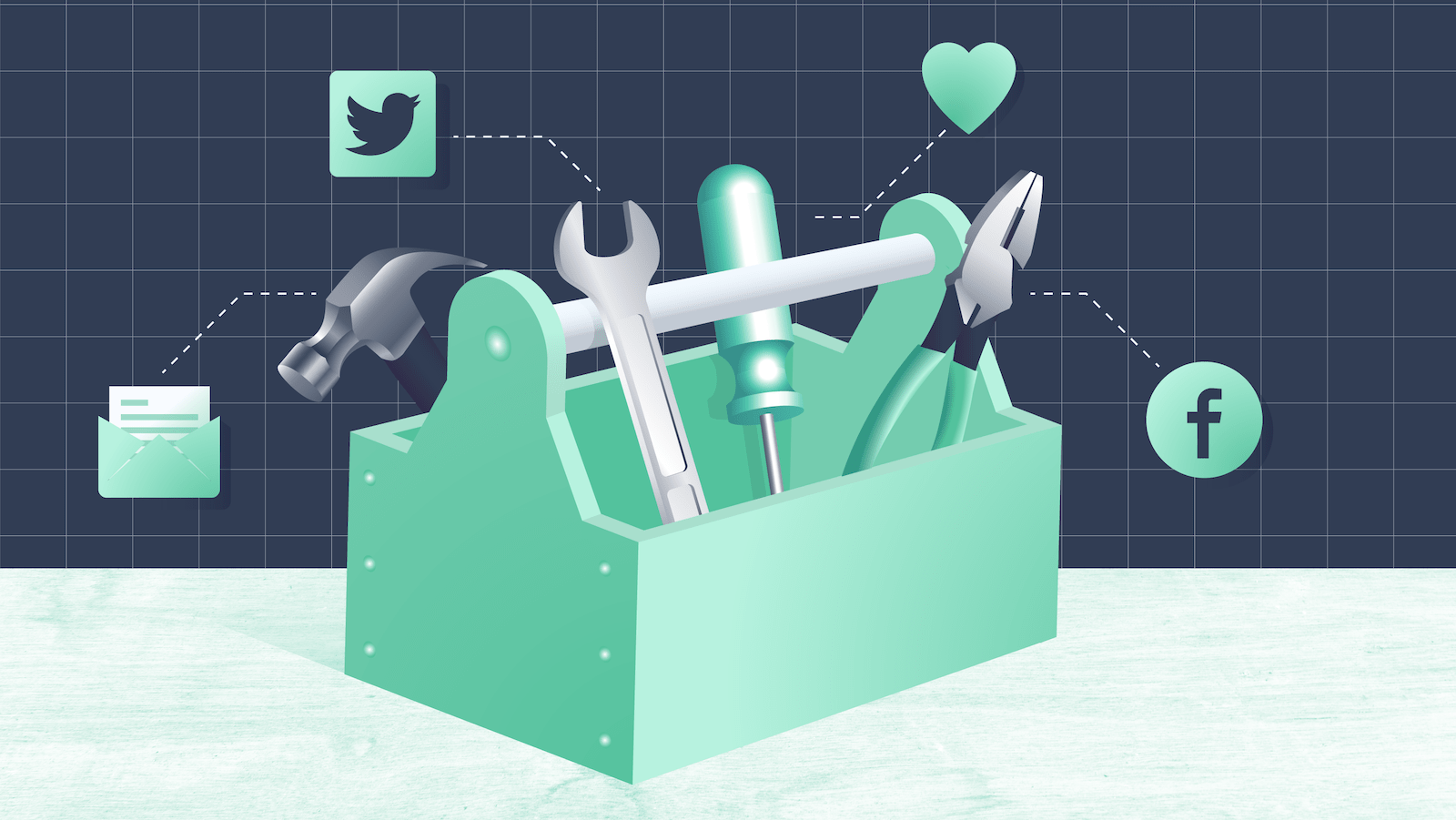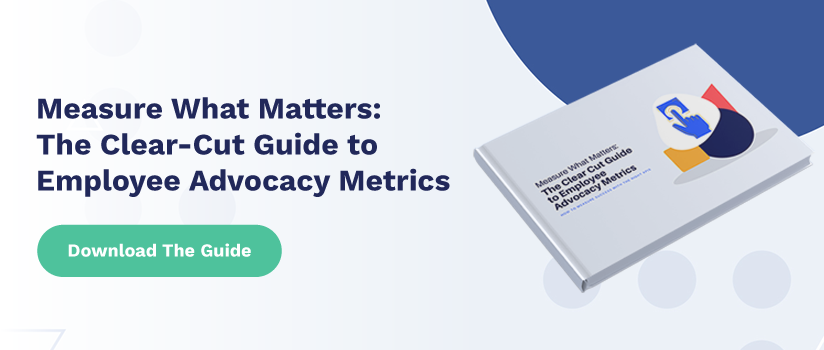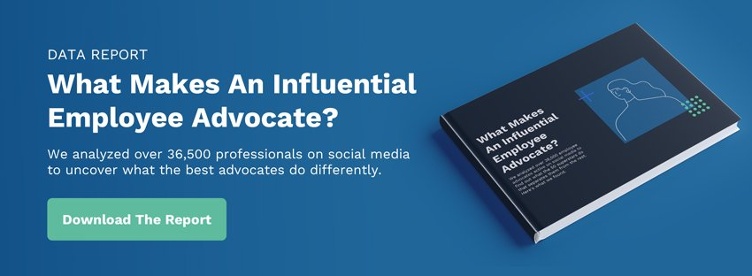According to a study by Fleishman Hillard, consumers trust a company’s employees three times more than the company leaders. Yet marketers today still follow the same strategy of sharing content only from their brand channels.
Marketing teams spend a tremendous amount of resources, time, and budget to create relevant content. However, the vast majority of content is ignored or delivers abysmal results.
By enabling employees to share content, you’ll be able to tap into the massive potential of your employee’s networks. On average, employees have 10x more connections than brands. Tapping into your employee’s social media by encouraging them to share and promote your content will yield significant results.
According to a Hinge Marketing study of companies that implemented employee advocacy programs, 65% reported an increase in brand recognition, while 32.4% notices an increase in organic search results.
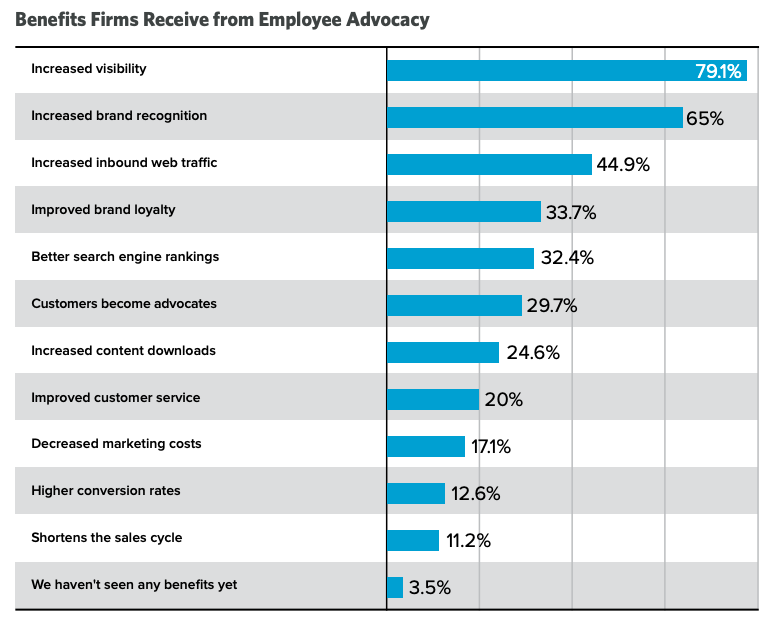
With all the countless benefits, there’s one question that may ponder your employee’s mind, “Is this another tool that I have to log into every day?”
In this article, we’ll discuss the benefits of employee advocacy and proven best practices that companies have successfully implemented, which you can take inspiration from.
We will also tackle some of the roadblocks that cause friction for your employees by providing tips, best practices and examples.
6 Benefits of Employee Advocacy
1. Increase Brand Recognition
Having a strong brand in the market will help your company attract more customers and strengthen relationships with existing clients. According to McKinsey, strong brands outperform others by over 20%. A strong brand helps you cut through the noise and establish yourself as a leader in your category. Thus reducing the sales cycles, increasing order-values, and strengthening customer relationships.
Today 54% of consumers use social media to research products. Also, 54% of consumers get their news and information from social media. With the abundance of information and sources, it can get overwhelming for you to cut through the noise. Moreover, the cost of digital ads is steadily on the rise.
Having an employee advocacy program in place can help you get the word out at a lower cost than most marketing channels. It will enable consumers to learn about you and recognize your brand.
According to a Hinge Marketing study of the effects of employee advocacy on 588 companies, brand awareness was one of the primary benefits — 65% of them saw an increase in brand recognition. Moreover, 79.1% saw a rise in visibility among their social media channels.
2. Amplify Marketing Efforts
93% of B2B marketers invest in content marketing, and this trend will continue to grow. The increased focus on content marketing makes it even more challenging for you to break away from the noise. Only 50% of articles received more than eight social media shares, and only 25% of any posts get any backlinks.
It’s frustrating for any marketing team to spend more than before but not getting the results you need.
What’s the solution? Content amplification.
Content amplification is the process of helping your content reach a wider audience.
The best way to do so is through an employee advocacy program wherein your employees share and help promote your content. Your employees’ same messages will help you reach a 561% more audience than if only shared via your brand account.
3. Engage New Customers
According to IDC, 84% of Executives use social media to make purchasing decisions. Moreover, buyers with larger budgets are more likely to use social media to choose vendors.
Salespeople and companies who are not using social media are losing out on potential revenue opportunities.
Employee advocacy allows you to reach a broader audience on your social media channels. Consumers are more likely to purchase from a face instead of from a brand logo. Hence, when your employees share and promote your content, it helps your content (and thus your company) get more credibility.
4. Cost-effective Way to Acquire New Talent
Finding and retaining good employees is essential for creating a strong company culture. However, it can take a company up to 6 months and $4129 to find and hire a new employee.
Having a strong employer brand helps you attract top talent and reduce the time to hire a new employee. About 86% of job seekers research company reviews before applying for a company.
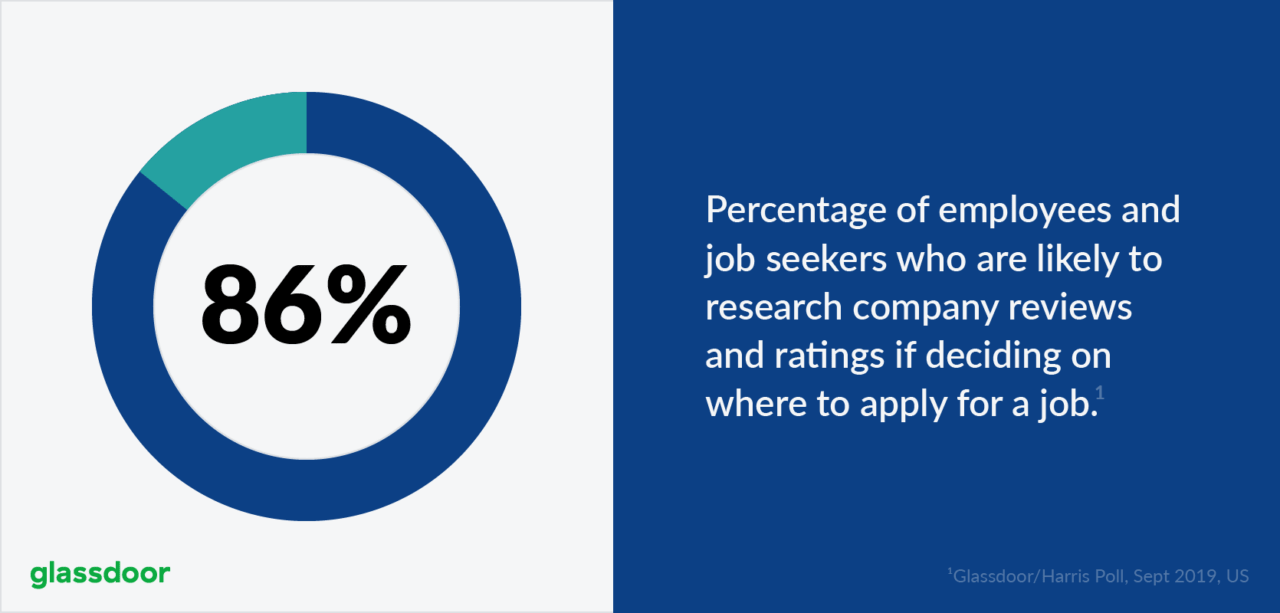
Empowering your employees to share information about your company on social media channels will help you get the word out. Potential candidates can learn about company culture, mission, values, etc. It will help attract the right talent who jive with your existing team.
5. Create Employee Brand Ambassadors and Thought Leaders
According to an ITSMA report, 75% of buyers mention that thought leadership is essential when evaluating vendors. Thought leadership helps you stand out amongst your competitors in an over-crowded marketplace.
For example, if you are a software vendor, just head over to G2 or Capterra to see the number of companies in your niche. The sample applies to any product or service, whether it’s B2B or B2C. There’s intense competition. Your customers today have an overwhelming choice of vendors to pick and choose from.
Marketing Thought Leaders such as Tim Soulo from Ahrefs and Neil Patel from NPD regularly use thought leadership content to generate more brand awareness and new clients.
Similarly, you can empower your C-suite and other employees to be thought leaders and brand ambassadors through your employee advocacy program.
Encouraging them to share and promote the right content to the right audience will help show your prospects that your team and your company are knowledgeable in the industry.
6. Boost Revenues
According to the Hinge Marketing study, 27% of surveyed companies decreased their sales cycles. And 26.4% generated additional revenues as a result of their employee advocacy programs.
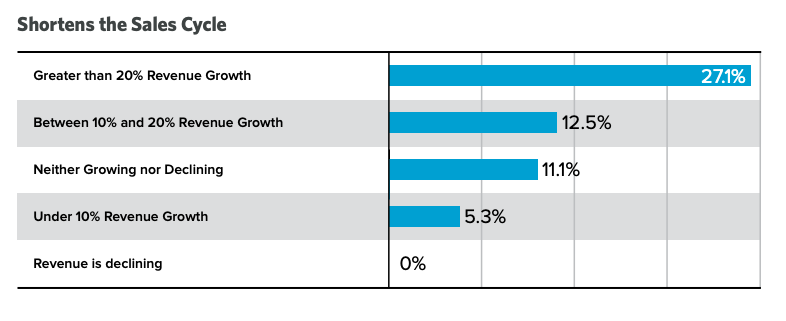
With an employee advocacy program, you can reach a wider audience, generate more leads, and engage more customers. Generating new revenue is an automatic byproduct.
Why Employee Advocacy Isn’t Just Another Tool
Employees are overwhelmed with the number of tools and programs they need to perform their roles. According to an extensive study by Okta, employees in smaller firms use more than 73 tools. In comparison, employees in larger companies employ more than 200 tools.
If a Marketing or HR team introduces a new platform, it’s natural that most employees will be turned off. Introducing an employee advocacy program as another tool will reduce the chances of adoption. It will be one of the many things employees will either ignore or phase off.
When launching an employee advocacy program, it’s essential to explain to all stakeholders its benefits. Not just the benefits to the whole company, such as increased revenues, brand awareness, etc. But also, the advantages to each team or employee must be thoroughly explained.
Ensure that they understand the personalized benefits of an employee advocacy program. For instance:
- Marketing teams will benefit from increased leads, website traffic and brand visibility.
- Sales teams will see an increase in meetings booked and more customer engagement.
- HR and Recruitment teams will see an increase in quality candidates, lower hire times.
- Executives will notice a boost in thought leadership, credibility and increased revenue.
Communicate the benefits to each employee who becomes a brand advocate. They will see an increase in their social media following and engagement. It will also help them build their brands. Studies have shown that 86% of employees who participated in a formal employee advocacy program have seen an increase in social media engagement, which has helped them boost their careers.
Finally, explain the collective benefit of an employee advocacy program. There will be a direct improvement in employee engagement and workplace culture.
11 Best Practices for Companies to Ensure Employee Advocacy Adoption
If you’re kickstarting an employee advocacy program then you’re likely wrapping your head around employee adoption.
Maybe you’re scratching your head thinking about gamification or even how to communicate to employees about employee advocacy. Or your employees have asked “is this just another tool for me to log into?”
Fortunately, there’s a playbook for this! Companies of all sizes have already implemented, tested, and seen positive results.
Let’s look at a few of the best practices to ensure your employee advocacy program’s successful adoption.
1. Get Leadership Buy-in
The success of any program in the workplace relies on whether you can get leadership buy-in or not. Most marketers get excited when they learn how other companies have implemented an employee advocacy program and experience tremendous success.
However, when they try to get a similar program started, it’s often met with resistance, especially at the top.
To get your leadership team, both the C-Suite and VP-level executives interested in implementing and supporting employee advocacy — lay down the facts.
Show them supporting stats and examples of other companies that have implemented. Also, share the results others have experienced, especially if they’re in a similar industry. They want to know the ROI, so be prepared to speak about the benefits not just for the marketing team but also how they impact corporate goals. As Saphiya from Gainsight says, you need to focus on the ROI that executives actually care about.

Next, put them at ease by mentioning that it will not take them too much time to share this information. Explain to your executives the importance of how the program will establish themselves and the company as thought leaders in your industry.
Finally, provide them with a detailed plan of implementation and also how you will measure success. Make it easier for your leadership team to approve and support the program.
2. Plan, Plan, Plan
As Brian Tracy says, “Proper prior planning prevents poor performance.”
It’s an adage that all of us have heard probably way too many times in our professional careers. Yet, it applies to the launch, implementation, and success of any marketing program or campaign. Your employee advocacy program is no different.
Once you have established that you want to implement an employee advocacy program for your company, the next step is to create a plan for your pilot program and company-wide rollout.
Here are a few things to consider when preparing a rollout:
- Which content do you want employees to share?
- What will the pilot program look like?
- Who is involved in the pilot?
- How many employees do you want to get involved in the pilot?
- Which executive sponsor will help validate and support the program?
- How are you going to measure success?
- How many meetings will you need to have?
- What training sessions do you need to deliver?
- What tools do you need to invest in?
- And so on.
These questions will allow you to create a proper plan before your program launch. Moreover, having a detailed plan will also help you get leadership buy-in as well.
3. Set Goals and KPIs
Any program’s success depends on the goals you set and how well you perform against those goals.
Since a successful employee advocacy program will help you amplify your brand presence, it’s important to measure against them.
Setting SMART Goals and establishing KPIs will help you consistently track the performance. It will also help you make any course corrections if required.
Here are a few KPIs that you can set:
- Sales KPIs: Opportunities closed, Pipeline influenced, Revenue generated.
- Marketing KPIs: Social media impressions, increase in website traffic, new marketing leads, new Earned Media value, New Brand Media value.
- HR KPIs: Average time to hire, number of new hires, the average cost of acquiring new hires.
- Leadership KPIs: New Revenue generated, New enterprise customers acquired.
These are common KPIs tracked by companies when they implement an employee advocacy program. Feel free to add your list of Goals/KPIs to this mix.
4. Communicate the Value
Every stakeholder involved should understand why you’re promoting an employee advocacy program.
Provide everyone in the company the organizational benefits (increased revenue, brand awareness) and the cultural benefits (employee engagement, new hires).
Also, make sure to communicate the benefits to each stakeholder why it’s going to impact them personally. Persuade how getting involved not only helps the company but also helps them reach their professional goals.
We have covered in an earlier section the benefits for each stakeholder.
5. Provide Training and Guidelines
Most employees are apprehensive about sharing company information. According to this article on Marketo, these are three main reasons why employees don’t share your content:
- They’re not sure if you want them to.
- They’re not sure if they are allowed.
- They’ve never been asked.
Step One is to create clear-cut social media guidelines for employees to refer to. It should explain to them what language, branding, the context they can use to share.
Also, make sure your social media policy is widely distributed and easily accessible to your employees.
Ensure that you also provide adequate training sessions virtually to help them understand your social media policies and the employee advocacy program. Train them on where to find the information, the appropriate language to use, the best channel to share, etc.
6. Provide the Right Content
To successfully amplify your content, you must provide your employees with the right content to share.
If you already have a library of content to share, it becomes easier for your employees to promote. On the contrary, if you are just starting to scale your content, create the content before rolling out an employee advocacy program.
To increase the likelihood of social sharing, make sure it’s relevant to their roles.
For example, content about employer branding and work culture can be easily shared by every employee. However, it’s not the same for every piece of content.
Sales teams might find it useful to share industry publications, third-party resources or customer stories to engage their prospects and customers.
Your Engineering team might find it valuable to share your inner workings on the tech team, the company’s tech stack and hackathons.
The Leadership Team is usually inclined to share news about company milestones, announcements and new executive hires.
In summary, to be effective, make sure you tie your content to the right team and the right goal.
7. Make Social Sharing Easy
You can have the best content library; however, employees are less likely to promote it if it’s hard to find and share.
Don’t put the onus on them to find, sort, and share the best content. Make it easier for your employees to share your content.
If you are starting, then occasional emails or messages to your employees would help. However, to be effective, invest in an employee advocacy platform such as PostBeyond, which will make it easy for them to find and share content.
8. Gamification and Incentives
Gamification is a great way to motivate your employees when done correctly. It’s also an opportunity to recognize and reward your top social rockstars.
Your employee advocacy program can employ different gamification tactics to encourage employee participation. By creating leaderboards, rewards, incentives, you can encourage participation. When employees see their peers using the platform, it will enable them to participate as well.
At PostBeyond, we organize monthly contests such as our most improved social sharer. We then reward each month’s winner with our official World Employee Advocacy Champion Belt for bragging rights!

You can run countless contests such as the most socially-engaged employee, most improved, top sharer, and more.
9. Track Performance
Earlier, we discussed the importance of setting goals and KPIs for your employee advocacy program. Any employee program’s success relies heavily on measuring the right metrics.
For example, if your goal is to increase your website traffic, then track social shares, traffic sourced from employee shares, website conversion and bounce rate.
If your goal is to generate leads, website conversions, webinar registrations, and content downloads are just as important.
Track your KPIs for all stakeholders (as discussed above) periodically. Learn, make course corrections, and adapt your program based on your results.
10. Collect Feedback
Tracking your metrics provides a data-driven overview of the success of your employee advocacy program. However, It’s just as important to get anecdotal feedback such as employees’ desire to participate, their belief in the program and what success they’ve seen.
Hence, it’s important to collect feedback from both your brand advocates and other employees.
Your employees should feel comfortable and confident, knowing that they can make the program a success. Invite them to provide updates at company meetings, town-halls, lunch-and-learn sessions.
Share with them the impact of their advocacy and how it is helping the company. It will help instill a shared sense of purpose.
Your sales and customer service team are often at the front-line and in constant interaction with your customers. They might even help you come up with new content ideas based on what they hear from customers.
11. Use the Right Platform
The right technology can help you put all the above best practices into action.
The ideal employee advocacy platform should help you:
- Centralize all your content in one place.
- Make it easy to share on all social networks.
- Have the necessary integrations with your other marketing platforms.
- Help you with gamification and encourage employee participation.
- Help track and measure the performance of your program.
We are firm believers that any technology is only as good as the people behind it. Hence, the platform also must have excellent onboarding and post-sales support. Fortunately, you can check for reviews for employee advocacy platforms on G2, Capterra, and TrustPilot.
4 Tips for Employees for Integrating Employee Advocacy in their Day-to-Day Role
The companies that have been most successful with their employee advocacy programs have few things in common. They routinely train their employees, consistently measure and track results, and make the necessary course corrections.
Having the best plan or even the right tool will fail if you do not stay on top of the program. Employee advocacy is not a set-it-and-forget-it strategy. You will need continuous participation and feedback from your leadership and your employees.
Here are a few tips that can help ensure they are actively promoting and sharing your content on a day-to-day basis.
1. Timely Discussions
It’s not enough to provide a training session at the launch of the program. You must remind your employees about the program consistently. Else, it will become “just another” marketing team initiative that they forget or lose interest.
Have dedicated sessions at least every quarter. Discuss the progress since the last session.
Show them that their involvement has been crucial for the success of the program.
Share where you stand against the collective goals you set. Share the milestones, and share success stories from your employees.
2. Employee Advocacy Leaders
Introducing gamification features such as leaderboards, rewards, and incentives will boost your employee advocacy program’s visibility and adoption.
Our studies show that a few employees (on average, 30%) are proactive brand advocates. However, only 9% of these advocates are actively sharing content.
Provide an opportunity for these brand advocates to share the benefits they have experienced by actively sharing your company content. During your training sessions or town-hall sessions, provide them a few minutes to share their experiences and impact.
For example, if one of the Sales reps shares a story on how sharing content helped her attract a new opportunity to their pipeline — it will inspire others in the Sales team to take notice and participate in the program.
People love stories rather than stats. So please provide them with opportunities (both virtual and in-person) to share their success stories.
3. Make it Easier for Employees to Provide Suggestions
The onus of the employee advocacy program should not fall strictly on the marketing team. Yes, marketing should be heavily involved in ideation, planning, implementation, measurement, and improvements.
However, once the program is active, make sure to get feedback from your employees.
Provide an opportunity to share how the program is working for them. Here are a few things to get feedback and suggestions:
- How easy is it for them to find and share content?
- Is the content resonating with them?
- Is the content resonating with their social networks?
- What other types of content would they need from you?
- What content are prospects and customers interested in?
These suggestions will also help you improve on and add to your content strategy.
4. Create a Daily/Weekly Routine to Schedule Posts
Educate your employees on the best times to share new and relevant content for each network. Our studies have found that the best times to share are at 7 AM and 2 PM.
Around 71% of sales professionals are using social selling tools. They are already actively engaged in social media for prospecting and client management. So, encourage them to share your content to amplify their social selling efforts.
Consistency in social media yields predictable results. Remind them that it’s not enough just to share content once, but to make it a habit or routine. Doing so will attract the right opportunities but also help them create their personal and professional brands.
Final Thoughts
Since 2013, there has been a steady increase (191%) in interest in employee advocacy. In a recent study conducted by our PostBeyond team, 45% of surveyed respondents say it’s a top business objective.
Employee advocacy isn’t just another piece of software you’re asking employees to log into every day.
An employee advocacy program can be one of those high-leverage marketing activities that will allow you to get additional results from your existing social media marketing efforts. The tangible benefits are many-fold — increase in website traffic, increase in leads, increase in brand awareness. Moreover, your sales teams will benefit from shortened sales cycles and increased pipeline.
